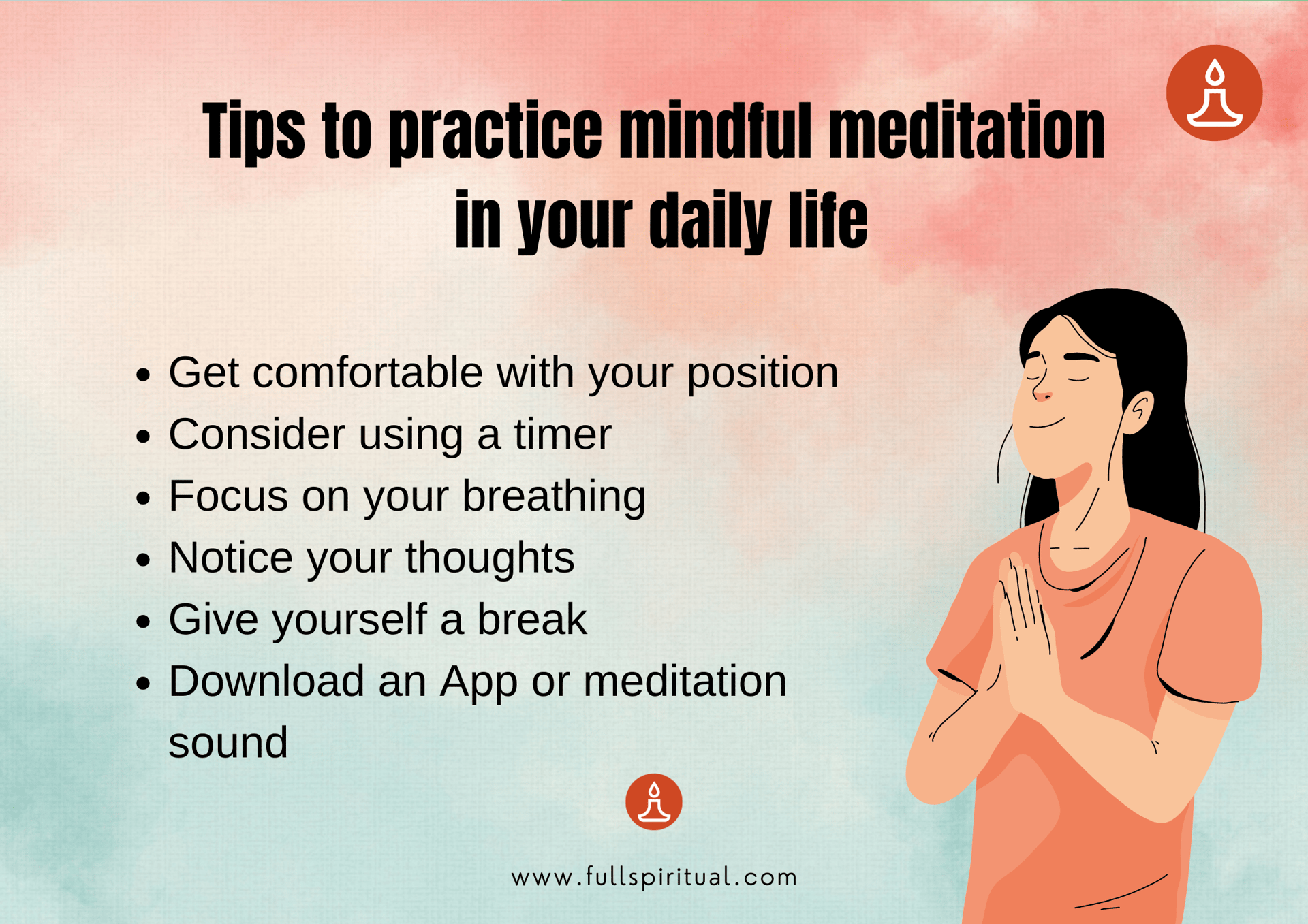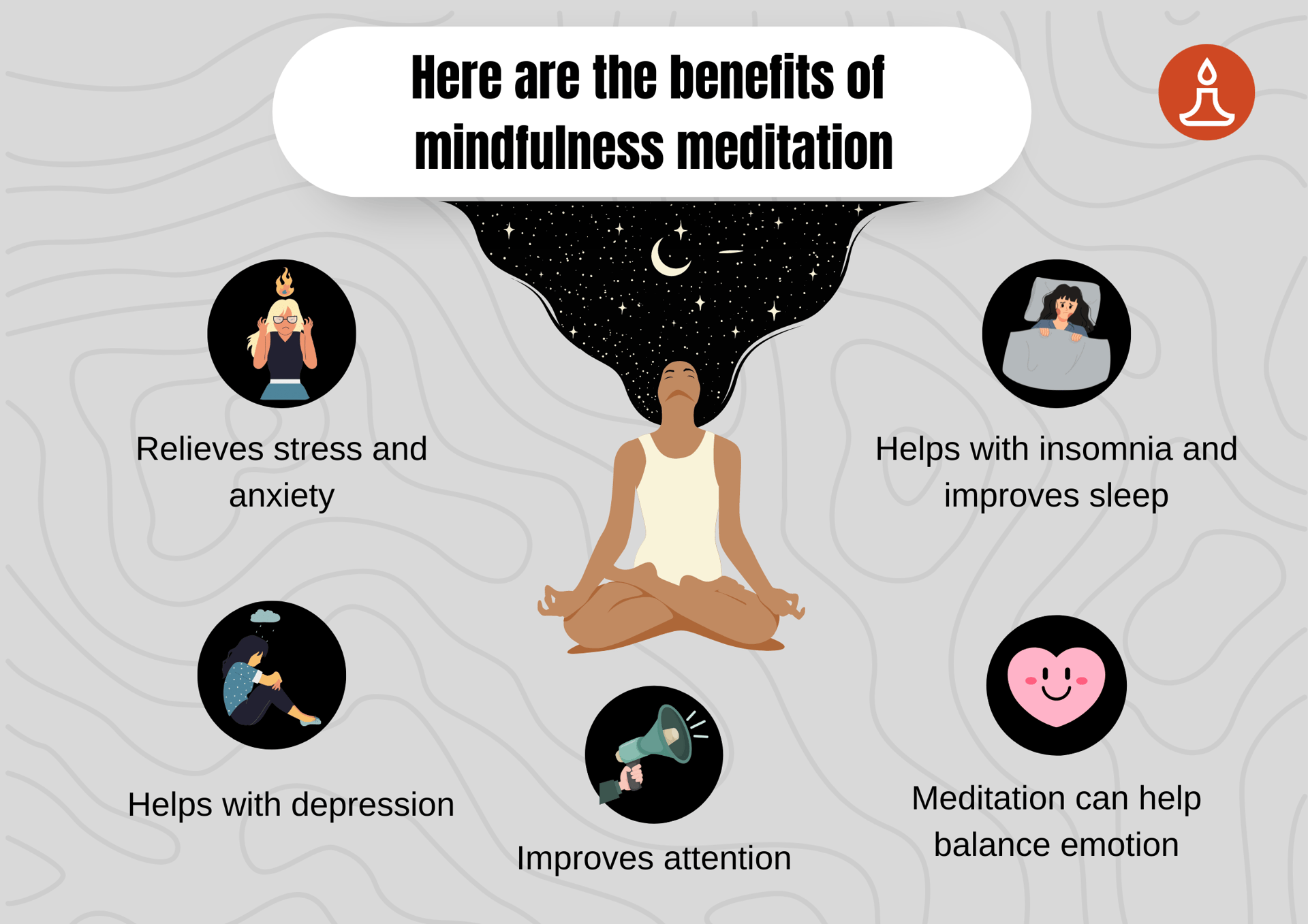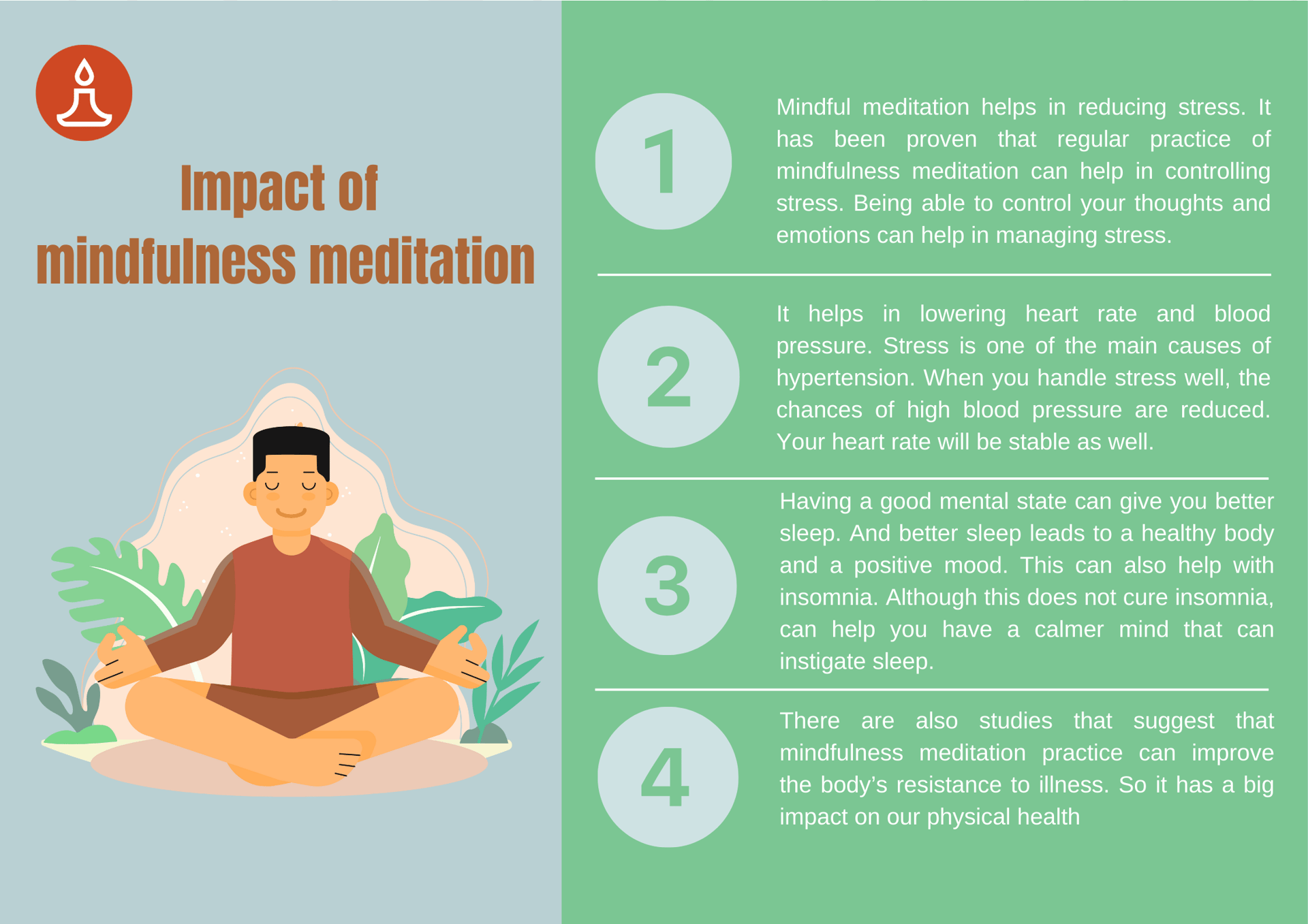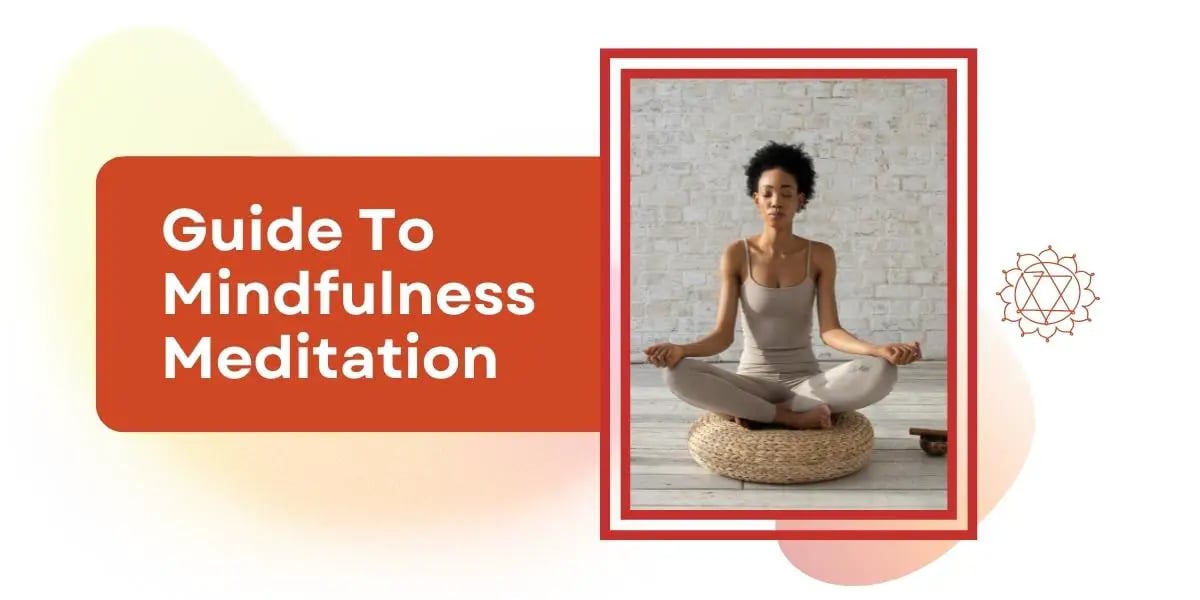Spiritual
A Guide To Mindfulness Meditation
Have you tried to slow your thoughts down to appreciate how good your sandwich taste or how bitter-sweet your coffee is? Chances are, you never realize these simple things because your mind is thinking about your next meal or deadlines. Your mind is always one step ahead of you and sometimes you get tired of chasing your own thoughts. Your mind is too busy that you get stressed and you feel anxious.
Try doing mindful meditation and see how this simple 15-minute activity can improve your everyday life.
Here is how to do mindful meditation and what are the benefits of doing this mindful practice.
What is mindfulness meditation?
Mindfulness meditation is doing meditation while being present in the now. Sounds contradicting? But no. This is a meditation practice that allows you to acknowledge your thoughts while being calm and at peace with your inner self. Mindful meditation practice helps you to collect your thought, whether good or bad and learn to accept them.
This kind of meditation does not guarantee that you will not feel stressed or you will not have any negative thoughts anymore. But what it does is it makes you acknowledge your thoughts and feelings so you can have the clarity of mind to handle these thoughts and emotions which can be done in many ways.
But the most common and the easiest way is through breathing exercises. You can even practice in a small corner of your house, in a quiet and comfortable space. Let your mind and thoughts flow freely and meditate for 15 minutes a day.

Tips to practice mindful meditation in your daily life
As we said earlier, you can practice this meditation even at home. You can meditate while doing simple tasks like brushing your teeth, washing the dishes, or even when you are cleaning your home.
When you pay attention to things, your awareness starts and you become present in the moment. Your mind focuses on the activity at hand, say for example brushing your teeth. The up and down and sideways movement of your arms as you brush your teeth creates a patterned movement when you can focus. Your attention to this simple task makes your mind aware of the present.
Another example of how to do mindful meditation in your everyday task is when you do the dishes. Simply observing how the water from the tap runs to the plate and how the sponge creates bubbles every time you squeeze can lead you to awareness. This awareness can start your mindfulness practice meditation.
You can also do basic mindful meditation practice when you exercise. Combine your regular workout with a good breathing pattern and you can start meditating. Your awareness of the activity at hand, say doing sit-ups. You can feel the movement of your body and combine it with regular breathing so you can focus. This will focus your thoughts on your breathing while being aware of how many sit-ups you do.
Get comfortable with your position
To start your meditation, find a comfortable place in your house. You can sit on the floor, or on your bed. You can also sit in a garden if you enjoy the sun. Any spot in your house can be a meditation space as long as you are comfortable. Sit upright, not slouching, and start your breathing exercise. Wear loose and comfortable clothing.
Consider using a timer
Meditation can be done from 5 to 15 minutes depending on your level of focus. If you are a beginner, you can do 5 minutes. If you practice day by day, you can gradually increase the timing. Some people tend to be so focused on meditation that they lose track of time. If you are one of them, you can use a timer to time yourself. A soft sound to rouse your mind from your meditation will do.
Focus on your breathing
Breathing is one activity that you do regularly and voluntarily. Focus on your breathing and how your body process this task, from your nose to your lungs and back to your nostrils as you inhale. This will make you focus on your breathing while breathing aware of how it happens inside your body.
Notice your thoughts
It is not impossible to get distracted when you meditate. Your thoughts will come but don’t get frustrated. Acknowledge your thoughts and let them pass. The aim of this type of meditation is to be aware of your thoughts and feeling and to let them pass.
Give yourself a break
Every time you get distracted during meditation, acknowledge your thoughts. Follow them and see where it takes you. You can always go back to meditation in case your mind gets distracted. Do not force yourself into meditation. Give yourself a break if you need to. Meditation is a process and it takes time to get used to it.

Download an App or meditation sound
If you find it difficult to meditate alone, you can download apps that will guide you in your meditation. There are mindful meditation programs that you can listen to on the internet that will help you as you start your meditation.
What are the benefits of meditation?
It has been proven that doing regular meditation can benefit both mentally and physically. There is evidence that supports the claim that meditation can bring about a healthy mind and body. Apart from physical and mental health, one can also benefit emotionally. Loving-kindness meditation is a practice where you focus on benevolent and loving energy towards yourself and others.
Here are the benefits of mindfulness meditation
- Relieves stress and anxiety
- Reduces pain
- Helps with depression
- Helps with insomnia and improves sleep
- Stabilize blood pressure and prevents hypertension
- Meditation can help balance emotion
- Improves attention
- Helps in diabetes control

What are some examples of mindfulness exercises?
There are many simple ways that you can practice mindfulness in your everyday life. A simple task can give you a chance to meditate. You do not need a fancy place or any equipment to have your own quiet time. Just put your mind to the activity and you can start meditating.
Simple things that can bring joy and positivity to your mind and heart can be a way to meditate. A simple activity of living in the moment like eating a good meal or enjoying the smell of a newly opened book. Simple things that can rouse your five senses.
Being open-minded and optimistic is a good practice of mindfulness. Being accepting of things and even in difficult situations can help you in reducing your stress and negative feelings.
But if you want a more structured meditation, you can try body scan meditation. As the name suggests, this type of meditation gives you awareness of your body. Simply lie down on the floor with your legs and arms extended with palms facing up. Slowly give attention to every part of your body and be aware of the sensations that you feel towards each body part.
Another structured meditation practice is walking meditation. In a wide space, walk slowly giving attention to every movement as you pace. Be mindful of the activity and feel the energy of your body as you walk.
You can also do sitting meditation. Sit in a comfortable position with your back straight and your leg flat on the floor. Put both your hands on your lap and slowly breathe through your nose. Focus your attention on your inhale and exhale.
Impact of mindfulness meditation
- Mindful meditation helps in reducing stress. It has been proven that regular practice of mindfulness meditation can help in controlling stress. Being able to control your thoughts and emotions can help in managing stress.
- It helps in lowering heart rate and blood pressure. Stress is one of the main causes of hypertension. When you handle stress well, the chances of high blood pressure are reduced. Your heart rate will be stable as well.
- Having a good mental state can give you better sleep. And better sleep leads to a healthy body and a positive mood. This can also help with insomnia. Although this does not cure insomnia, can help you have a calmer mind that can instigate sleep.
- There are also studies that suggest that mindfulness meditation practice can improve the body’s resistance to illness. So it has a big impact on our physical health

Conclusion
Meditation is universally accepted as a way to calm the body and mind. Mindfulness meditation is just one of these many meditation practices. Although mindfulness meditation can help with the overall well-being of a person, it is only one part of the equation. Support your meditation with a healthy lifestyle and a positive outlook for a better and happier life.

